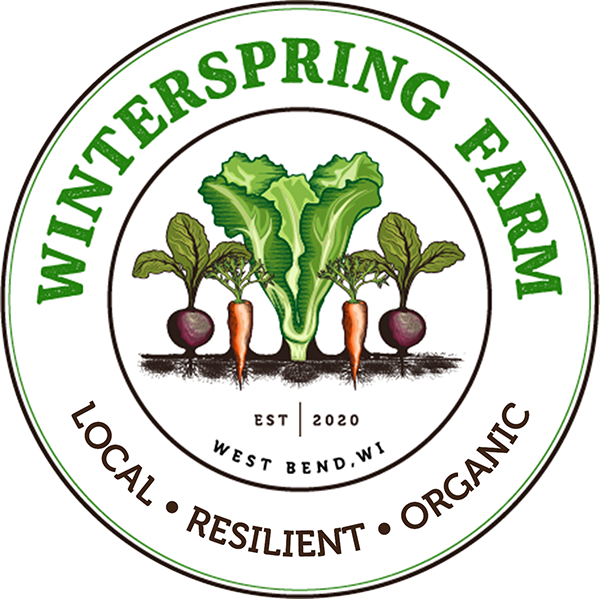Kale
Culinary Use, Storage, & Benefits
Winterbor variety of curly kale
Vegetable Profile: Kale (Brassica Oleracea acephala)
Description
Kale is the grandmother of Brassicas, as it is the predecessor of other crops bred from it like cabbage, cauliflower, broccoli and more. It is a hardy non-heading green that is a reliable producer on our farm. It's enjoyed a wave of popularity over the past two decades, and for good reason – it packs a lot of nutritional punch for an easy-to-grow, long-season vegetable! It comes in many varieties, from hefty curly kale, to slender and tender Lacinato, to red and white Russian and even scarlet kale! So important in traditional Scottish diets, they have an old saying: to be “off one's kale”, meaning too sick to eat.
Nutrition
Young kale is warming when fresh, and sports a sweet nuttiness with notes of bitter and pungent flavor. It contains nutraceuticals lutein and zeaxanthin, which supports eyesight. It is an exceptional source of chlorophyll, beta-carotene, calcium, and vitamins E, K, and B. Rich in folate, this food is important for expectant mothers or those in their childbearing years.
Storage
Kale stores best in the fridge or freezer in a water-tight container. Use within 1 week.
Kale growing in the north field
Use
Cooked: To get the most of these fat soluble nutrients, and make it the easiest to digest, cook your kale in a heat stable fat like chicken broth, lard, butter, or coconut oil. We like to first steam it in a small amount of water until it's tender, then add the fat, garlic or other seasonings, soy sauce, and serve.
Raw: You can also get beneficial bacteria and vitamin C from consuming some raw kale as well. We love a massaged kale salad made with Lacinato variety.
Frozen: Kale is one crop we freeze every year, as it's so easy to just place in a freezer bag, chopped up raw. You can remove it in chunks that easily break off and toss into whatever you're cooking as needed.
Dried: Kale chips are a fun and delicious snack anyone can make to combat the “kale fatigue” that can come towards the end of the season, when you want to change up the way you eat it.
Sources:
SpecialtyProduce.com
The New Whole Foods Encyclopedia by Rebecca Wood
Asparagus to Zucchini by Fairshare Coalition
Produce: A fruit and vegetable lover's guide by Bruce Beck
Our own experience!






